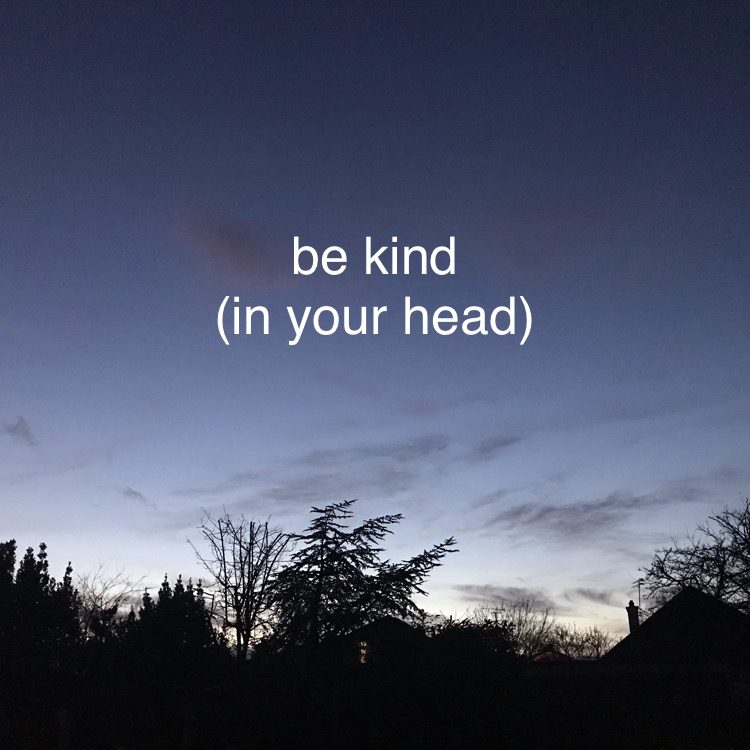This was a guest blog that I wrote for the brilliant 365 Days of Compassion Blog

It’s early February and you can’t quite fathom that you are breaking all your New Year’s resolutions. You are a month in and you are already overeating, missing the gym, drinking a glass of wine, the house is a mess, you’re berating yourself with a harsh inner voice and you’ve just had a needless argument with your spouse (insert relevant New Year’s resolution here)! We’ve all been there. The 12th of January is called quitters day for a reason. Our new positive behaviour has not persisted even through January. If this happens for eating less chocolate then what hope is there for having 365 days of compassion!
There is a cultural narrative that people don’t stick to their resolutions. It’s even a cliché to say new year new me. But behaviour change and psychology expert John Norcross tells us that actually 40% of resolvers are successful at 6 months. The critical window is maintaining the behaviour for 90 days to modify a habit. This includes really sticky addictions. The difference between the people who achieve this, is that they utilise their slips to renew their motivation to change. The average number of slips in the first 30 days is 6 and incredibly the number of slips does not predict whether someone will accomplish their goal. Compassion is a motivation as Paul Gilbert says, and is reflected in behaviour that we can cultivate and update. So even if compassion is not a strong character trait for us, it is a skill on a spectrum that we can develop. There is hope!
Because of our tricky brains, compassion and kindness can be difficult behaviours to modify. The following is some of the key barriers I have experienced teaching compassion and in my own mental health history:
• I can be kind and compassionate to other people, my friends and family, but not myself.This seems to be the most common barrier to compassion that I come across in my teaching. If we have internalised a strong critical voice in our childhood; if we have been abandoned or neglected; if we have not had our core needs for safety security and love met; then this critic can develop. It can take time to push into this barrier and to acclimatise to self-compassion. We can start with this focus on others and gently over time move it towards ourselves.
•Self-compassion is weak, I won’t get anything done if I let myself off the hook. It can seem like our greatest achievements coincide with an inner voice berating us to keep going. But often this is correlation and not causation. We can motivate and instruct ourselves in a kind and supportive way. Like a good coach or teacher, we can be firm but kind and accepting at the same time. Compassion like many of the best things in life is imbued with paradox. Paul Gilbert often uses the analogy of two schools we are choosing between to send our children. One is shaming, criticising and attacking to get the kids to study. The other is firm but kind, supportive and compassionate. Why do we keep sending ourselves to the cruel and shaming school?
•I’m not worthy and don’t deserve compassion. This is linked to shame, where we think or feel a global sense of not being good enough. This is closely connected to the first point. It was one of the key reasons that Paul Gilbert developed CFT. Because it is very difficult to engage in psychotherapy if we feel shame and hopelessness to our core. Like rocks in a pond we will keep sinking to the depth of our shame if we don’t engage with this at the root. It can be so useful to engage with a kind, supportive and affiliative therapist if we are struggling with shame. Often people with this barrier may describe a belief that everyone deserves kindness. But their felt sense is that they are not included in this group. The compassion practices (like the inner critic work) can be so useful here. Sometimes we need to move through rage and sadness in order to shift the shame to self-compassion and acceptance.
•I can’t do compassion it doesn’t feel safe. If we have grown up with environments where those who cared for us were also punishing, cruel, neglectful or abusive then we have an inbuilt distrust of closeness and warmth. There are even studies showing some people who have experienced this pattern, release more oxytocin (often called the love or cuddle hormone) in conflict than in closeness. This distrust was adaptive in our childhood, but now it does not serve us and our need for safety and connection. This is an area where a therapeutic relationship built on empathy, attunement, congruence and validation can be so critical.
•My mind is too crazy to be compassionate. If we are struggling with mental health challenges like anxiety, panic, OCD, depression and impulsivity then compassion can feel like a real workout for the mind at first. There may be doubt, self-attack, worry, intrusive thoughts, panic and other painful emotions as we begin to develop compassion. If we are depressed, we may feel nothing at all or we may feel shame and contempt. This ‘backdraft’ as Kirstin Neff calls it, can make people give up on compassion. But remember that compassion is a motivation and intention which may or may not come with feelings of love – think of the fireman running into a burning building, who is more likely to feel focused and fearful than warmth, peace and friendliness. It is a skill rather than a binary quality. We can develop it like learning a musical instrument.
There are other variations on these barriers, but these are some of the common ones I have experienced in myself and others in teaching. In terms of working with these and sticking to your resolution for 365 days, here are 6 tools that I have found useful:
1.Short practices many times – there is a principle in Tibetan Buddhism that states ‘short moments, many times.’ I think this can be incredibly useful. Gradual exposure is a principal that is highly effective in treating anxiety disorders. But this principle can also be used when positive emotions feel threatening. As stated above this can be because our soothing and reward systems have not been up-regulated and welcomed in our early attachments. Or our threat response might be directly connected with positive emotions. So, we can gradually expose ourselves to compassion in short practices, many times so that they become more natural and secure.
2.Narrate your day in a kind accepting way – our self-talk is such a useful tool for cultivating compassion. It might be worth taking note of how often the critical voice shows up throughout your day. For some this might be a clear and familiar inner voice. For others it might be more subtle thoughts and imagery or a felt sense of shame in the body. After you have spent a few hours or a day noticing this, see if you can gently bring in – a parallel and supportive voice. It doesn’t need to battle with the critic, and it should be focused on acceptance and kindness towards yourself. Overtime more of your attention is on the kind internal voice and eventually it starts to show up automatically when you drop a pile of plates! Engage your compassionate inner coach as Mary Welford brilliantly puts it.
3.Focus on behaviour and the thoughts and feelings will follow – often our behaviour is the aspect of our experience we have most agency over. Set goals for your day and week that manifest compassion and kindness for yourself and others. Take a bath, call a friend, walk in nature, give yourself the evening off, reduce procrastination thinking of yourself in the long run. Connect with another person who has this value and compassionate goals. Focus on your core needs for safety, connection, creativity or freedom together.
4.Be compassionate to our resistance and build compassion in parallel – if our mind throws up the critic, the catastrophiser, panic, shame etc try to meet this with compassionate attention, thinking and imagery. Send your loving kindness to these vulnerable parts and modes of our tricky brains. Compassion can be built alongside fear, shame, depression etc. Can we hold these emotions with compassion and steadfastly continue to be kind to ourselves and others? Just like in meditation – when our mind drifts away from the object we gently and kindly bring it back. We do the same if we lose touch with compassion throughout the day. In the beginning or during times of stress we may need to do this many times in a minute.
5.Join a compassionate group, community or find a compassion buddy – humans can’t survive well on their own. Our soothing system is built to activate in the presence of kind and supportive friends and family. Our ancestors spent almost all their waking day in the company of others. So, try to connect with a compassionate community or buddy to build these skills together. A virtual community like the 365 Days of Compassion can support you in this.
Why don’t we turn our slips into renewed motivation and keep coming back to compassion for 365 days?
